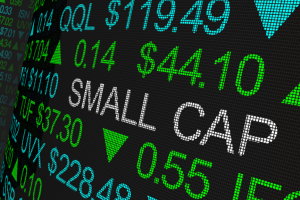
The 10-year Treasury yield’s pressure on stocks … the divergence of returns in the S&P … a tale of two 2024s … the forecast for tomorrow’s PCE data
One chart illustrates the problem for stocks today…

You’re looking at the 10-year Treasury yield.
Though volatile, it’s been rising all year as traders have pulled back their
bets on the timing and size of interest rate cuts from the Federal Reserve.
Two weeks ago, the 10-year Treasury yield bounced off its up-trending support
line. And as it has climbed higher in its channel, it’s been weighing down the
stock market.
For newer Digest readers, the 10-year Treasury yield is the single most important number for the global economy and investment markets
All sorts of interest rates and asset values are directly impacted by whether the 10-year Treasury yield rises or falls.
For stocks, a higher yield is typically a headwind against gains. Because of this, we usually see an inverse relationship between the S&P and the 10-year Treasury yield.
To illustrate, below let’s look at the 10-year Treasury yield in green and the S&P in black between fall 2022 and spring 2023.
The inverse correlation between the two assets is obvious.

So far in 2024, this inverse correlation hasn’t held up quite as strong.
As you can see below, both the 10-year yield and the S&P climbed until April, then the traditional inverse relationship kicked back in.

The separation since April is even more pronounced when we look at the S&P Equal Weight Index
The S&P 500 is a “weight averaged” index. In other words, the bigger the company, the more “representation” it has in the index. So, the bigger the stock, the more that the performance of that stock influences the overall S&P return.
Given this, when we look at the S&P’s price, we’re not viewing an accurate depiction of how its average stock is performing. We’re getting a skewed conclusion, heavily impacted by the performance of the largest companies in the index.
For a more accurate reading on the performance of the average S&P stock, we’d analyze the “Equal Weight” S&P 500 index. As the name suggests, this allots an equal weighting to every stock in the S&P so that no single company has outsized influence on the overall reading.
If we replace the S&P 500 with the S&P 500 Equal Weight Index, the inverse correlation becomes far more pronounced upon hitting April.

Also, note the striking difference in returns.
So far in 2024, the S&P is up 10% yet the S&P Equal Weight has tacked on barely 3%.
In other words, the headline index return is hiding a good deal of “meh” performance.
Behind this return differential are some soaring mega-cap tech stocks
We can’t call them the Magnificent 7 anymore because Google, Apple, and Tesla are having a tough 2024.
But here’s a chart from economist Ed Yardeni showing the enormous outperformance of a handful of mega-cap tech leaders on the year.

This makes an enormous difference in the S&P’s returns.
To illustrate exactly how enormous, consider Nvidia.
Here’s analysis from ETF.com. Keep in mind, this was written in mid-March, so the situation has become even more pronounced since then:
If you own the SPDR S&P 500 ETF Trust (SPY) you owe nearly a third of your gains to one stock.
Of SPY’s 8.4% return so far this year, 2.7 of those percentage points come from Nvidia’s 87% surge. That means that a single stock accounts for around a third of the S&P 500’s gain.
Since the date of this article, Nvidia has soared roughly 30% higher.
Now, tack on the returns of the other mega-cap leaders above. I’d guess, collectively, they account for 40% – 50% of the S&P’s returns this year.
Now, there are two takeaways…
The first is that we’re back to a market environment in which you either own the winners and are sitting on strong returns…or you’re treading water.
The second takeaway brings us back to why the traditional relationship between the S&P and the 10-year Treasury yield broke down during Q1…
A tale of two 2024s
During the first three months of the year, both the S&P 500 and the S&P 500 Equal Weight rose despite the climbing 10-year Treasury yield.
As we pointed out earlier, this bucks their traditional relationship. What was behind it?
Well, Wall Street had convinced itself we’d get multiple rate cuts by the end of the year. So, who cares about that climbing 10-year yield? Rate cuts are coming! Get in position!
But then we got into April…
At that point, the disappointing economic reports showing sticky inflation could no longer be brushed off as “temporary blips.” Wall Street had to come to grips with reality: the multiple rate-cut fantasy wasn’t playing out.
Below, we look at returns for the S&P 500 and the S&P 500 Equal Weight Indexes since April 1st.
The S&P is flat (slightly negative), and the S&P Equal Weight is down 4%.

This might explain why your portfolio hasn’t done much of anything in two months, even though the broad indexes have been hovering around all-time highs.
So, what happens from here?
That brings us to tomorrow…
Friday’s Personal Consumption Expenditure (PCE) Price Index report could spark the next leg higher in this bull market…or send stocks reeling
If you listen to Federal Reserve Jerome Powell in his post-FOMC press conferences, you get the feeling that he wants to cut rates, but just can’t justify it due to recent inflation data.
That puts extra weight on tomorrow’s PCE report which is the Fed’s preferred inflation gauge.
So, how will the numbers come in?
The dovish case is that the inflation spike in the first quarter was mostly backward looking. So, tomorrow’s PCE data will be softer, showing a moderating economy.
And in fact, today’s revised Q1 GDP numbers show the economy grew at only a 1.3% pace, not the 1.6% pace previously reported.
Soft PCE data will give Powell & Co. a better argument for cutting rates in September. The market will explode with a summer rally.
The hawkish case is that the economy remains far too strong, so inflation won’t play nice. Tomorrow’s data will show that “higher for longer” will be the Fed’s only course of action.
This will push the 10-year Treasury yield even higher. And the stock market’s price will appear increasingly unjustified due to the collapsing case for rate-cuts and climbing yields.
That would likely usher in a heavy market selloff.
Clearly, tomorrow could be a significant inflection point for the market.
Here’s how forecasts are coming in, courtesy of MarketWatch:
Core inflation will likely print at 0.2%, slightly better than the 0.3% rate see in March, according to the Wall Street Journal survey. That would be the lowest reading since December.
In the same report, the government will release consumer-spending data, which should moderate to 0.4% from the 0.8% rise seen in March. Income growth is expected to measure 0.3%, down from 0.5% a month before.
All in all, this report should be a Fed-friendly release that points to further moderation in consumer demand and real income growth that is gradually reducing the temperature on core inflation, keeping the door open for a couple of rate cuts later this year,” said Scott Anderson, chief U.S. economist at BMO Capital Markets.
We hope so. With the market sucking wind for two months now, “Fed-friendly” is what we need.
We’ll bring you the details in tomorrow’s Digest.
Have a good evening,
Jeff Remsburg




